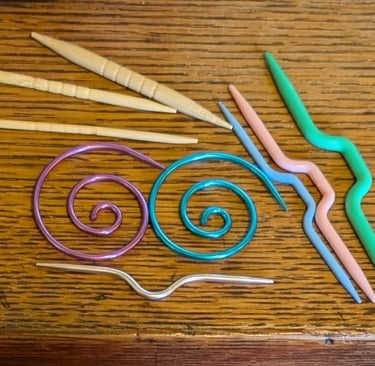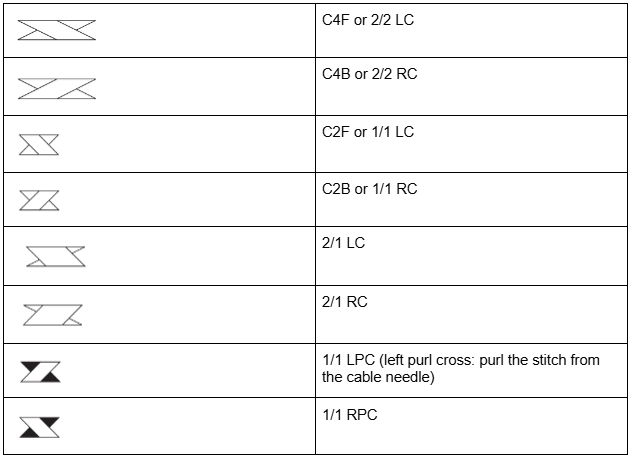Knitting Cables
Learn how to knit cables and read cable charts and patterns
5/26/20252 min read
Cables are a beautiful design element that intimidates many new knitters. Their many symbols and abbreviations certainly don’t help. But once you know how they work, they will probably seem easier than you previously thought. Essentially, cables are just stitches that have switched places, usually with the help of a cable needle. Here are some examples of cable needles:


C4F or 2/2 LC
These two abbreviations read as “cable 4 front” and “2 over 2 left cross”, but they mean the same thing, and it is one of the most common cable techniques. They describe a 4-stitch cable with two stitches crossing over the next two stitches, leaning to the left (hence, left cross). To do this, transfer two stitches to a cable needle and hold them in the front of your work (hence, cable 4 front). Knit the next two stitches on the left needle, then knit the two stitches off the cable needle. That’s all there is to it!
C4B or 2/2 RC
These abbreviations read as “cable 4 back” and “2 over 2 right cross.” This is very similar to the C4F and 2/2 LC cables, except this time you will hold the two stitches on the cable needle in back of your work while you knit the next two stitches from the left needle. The resulting cable will lean to the right.
Other Cable Notation
The X in CXF/B notation refers to the total number of stitches that are part of the cable, with half of them crossing over the other half. Typically, X will be 2, 4, 6, or 8, and all stitches will be knitted.
The X/Y L/RC notation allows for more flexibility, as the X and Y do not have to be the same number, and a P can be added to indicate purl stitches. For example, a pattern might say to do a 2/1 RPC (2 over 1 right purl cross). This means you will slip one stitch to the cable needle, hold it in back, knit the next two stitches from the left needle, then purl the one off the cable needle.
Cable Chart Symbols
Cable symbols on charts look very similar to the cables themselves. Here are some examples of symbols used for cables in charts:


Cabled Fabric
When swatching for a cabled project, you should include the cables in your swatch. Cables tend to have less stretch and they tend to pull the fabric inward compared to stockinette or garter stitch. Try not to pull your cables too tight, as it can make the fabric pucker. If you are blocking your cabled project, you should be careful not to flatten the cables in the process, you still want to see all that gorgeous texture!
If you want any help trying out cables, use the form below to send me an email. I encourage you to try them, even if they don’t make sense to you yet. The process will help you understand how they work. Happy stitching!


